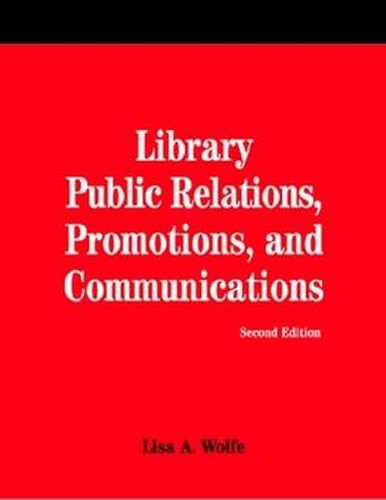Readings Newsletter
Become a Readings Member to make your shopping experience even easier.
Sign in or sign up for free!
You’re not far away from qualifying for FREE standard shipping within Australia
You’ve qualified for FREE standard shipping within Australia
The cart is loading…






The popular first edition (1997) of Lisa Wolfe’s guide has been totally revised–with five brand-new chapters: Positioning Libraries in the 21st Century ; Brand-building for Libraries ; Using Technology as a PR Tool ; Creative Effective Web Communications ; and Planning for Crisis Communications. Once again, Wolfe comes to the rescue with ideas and step-by-step guidance for PR campaigns that make measurable differences. New tools, new examples of real-life library publicity successes, and new strategies for promotions and communications are thoroughly covered. Chapters explain how to position today’s library in terms of policy issues, funding programs, and technological opportunities; how to develop a PR plan; build a brand identity and define your library’s message; use the Web, the media, and library-developed marketing materials to tell your story; create word-of-mouth coverage; approach crisis communications plans; and evaluate and re-tool your PR program. There are dozens of sample PR material examples - event plans, newsletters, brochures, Web pages, press releases, and more, as well as online services for publicity and state and national public relations networking op
$9.00 standard shipping within Australia
FREE standard shipping within Australia for orders over $100.00
Express & International shipping calculated at checkout
The popular first edition (1997) of Lisa Wolfe’s guide has been totally revised–with five brand-new chapters: Positioning Libraries in the 21st Century ; Brand-building for Libraries ; Using Technology as a PR Tool ; Creative Effective Web Communications ; and Planning for Crisis Communications. Once again, Wolfe comes to the rescue with ideas and step-by-step guidance for PR campaigns that make measurable differences. New tools, new examples of real-life library publicity successes, and new strategies for promotions and communications are thoroughly covered. Chapters explain how to position today’s library in terms of policy issues, funding programs, and technological opportunities; how to develop a PR plan; build a brand identity and define your library’s message; use the Web, the media, and library-developed marketing materials to tell your story; create word-of-mouth coverage; approach crisis communications plans; and evaluate and re-tool your PR program. There are dozens of sample PR material examples - event plans, newsletters, brochures, Web pages, press releases, and more, as well as online services for publicity and state and national public relations networking op